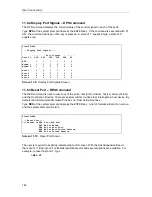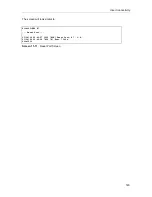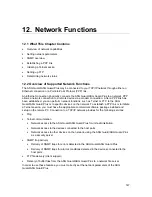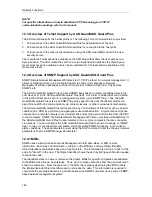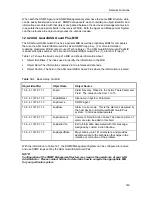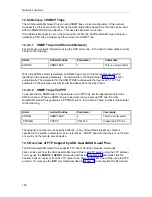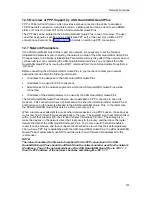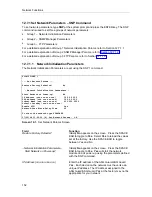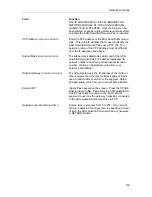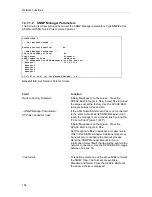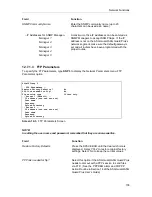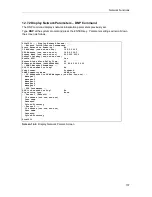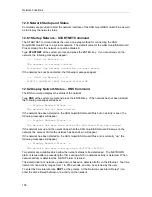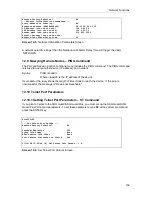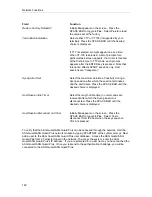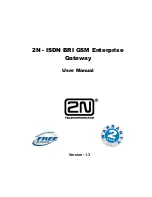
Network Functions
150
12.4.3 Delivery of SNMP Traps
The ASG Guard/ASG Guard Plus can send SNMP traps via two mechanisms. If the network
manager is on the same LAN or WAN as the ASG Guard/ASG Guard Plus, the trap can be sent
with the SNMPTRAP Action Routine. This uses the Ethernet connection.
If the Network Manager is not on the same LAN or WAN, the ASG Guard/ASG Guard Plus can
establish a PPP link via modem and then deliver the SNMP Trap.
12.4.3.1 SNMP Traps Via Ethernet (Network)
Set all required network information using the SNP command. In the Action Table, place an entry
similar to the following:
Alarm
Action Routine
Parameter
Comments
ERR123
SNMPTRAP
1
This is a major alarm
When the ERR123 alarm is detected, an SNMP trap is sent to the management system(s)
identified in the network parameters. All information in the fields listed in Table 12-1 is sent
automatically. The parameter for the SNMPTRAP routines sets the trap level (1-10). This
parameter is the enterprise specific trap ID and depends on the trap format.
12.4.3.2 SNMP Traps Via PPP
To denote that an SNMP trap is to be delivered via a PPP link, set the appropriate field in the
SNP command. When an SNMP trap is to be delivered via a dial up PPP link, the ASG
Guard/ASG Guard Plus generates a .PPPREQ event. In the Action Table, include entries similar
to the following:
Alarm
Action Routine
Parameter
Comments
ERR001
SNMPTRAP
2
This is a minor alarm.
.PPPREQ
PHPPP
5551212
Create the PPP link.
The telephone number can be specified directly, or any of the default telephone numbers
specified in the system parameters can be referenced. PHPPP assumes that there is no firewall
or security on the remote access device.
12.5 Overview of FTP Support by ASG Guard/ASG Guard Plus
The ASG Guard/ASG Guard Plus supports FTP Client Send and Receive commands.
Files can be sent from the ASG Guard/ASG Guard Plus to an FTP server using the FTP protocol.
You may use the SEBUF or SEND commands described in Chapter 7 to accomplish this file
transfer. Files can be sent from the FTP server to an ASG Guard/ASG Guard Plus using the FTP
protocol. You may use the RCV command described in Chapter 7 to accomplish this file transfer.
Summary of Contents for Lucent Technologies Access Security Gateway Guard
Page 12: ...x Page intentionally left blank ...
Page 28: ...ASG Guard Overview 16 Page intentionally left blank ...
Page 36: ...Physical Connections 24 Page intentionally left blank ...
Page 60: ...Modem Port Setup 48 Page intentionally left blank ...
Page 82: ...Modifying the User Database 70 Page intentionally left blank ...
Page 120: ...Action and Event Tables 108 Page intentionally left blank ...
Page 158: ...User Connectivity 146 Page intentionally left blank ...
Page 188: ...Log Functions 176 Page intentionally left blank ...
Page 236: ...Troubleshooting 224 Page intentionally left blank ...
Page 252: ...Internal Battery Replacement 240 Page intentionally left blank ...
Page 258: ...Glossary of Command References 246 Page intentionally left blank ...









